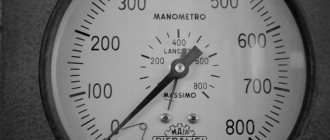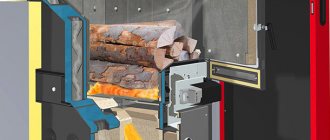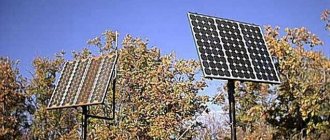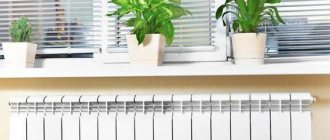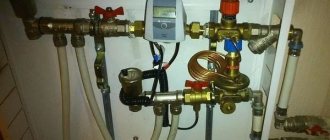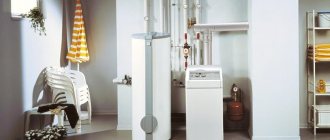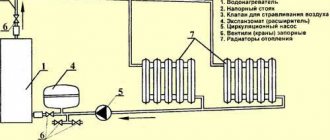Preparation
It doesn’t matter what you heat your house with - a boiler, a furnace, a heat pump or air conditioners. Heat sources need to be prevented before the heating season:
- Dirty boilers and furnaces are ineffective. A large amount of heat goes into the pipe because, due to contamination, it cannot effectively transfer it to the water in the heating system.
- A heat pump will run less efficiently if it is low on refrigerant or has dirty oil. During downtime, sediment may appear in its pipes, plugs may form, etc. they will reduce its efficiency.
- Electric convectors must be thoroughly washed - during the summer a lot of dust accumulates on their internal parts. Which does not allow the air to be heated effectively.
- If you are going to use air conditioners to heat your home, you should also prepare them. Be sure to clean the outdoor and indoor units. Check the quality of work, how well the air conditioner blows and heats.
Saving on heating: 13 ways to reduce heating costs
Saving on heating in an apartment or private household begins with identifying “bottlenecks,” that is, those factors that increase heat costs. By eliminating these causes, you can achieve a significant reduction in your flood bill. MirCli specialists have collected ways to save on heating your home.
1. Replace glazing
Old wooden windows are not airtight, so heated air will escape through the cracks. Of course, during the heating season you can insulate the openings the old-fashioned way: seal all the holes with masking tape. This solution will help to realize some savings, but not much.
In order to save money, the best strategy would be to replace old windows with new sealed double glazed windows, at least double glazing. It is even more effective to use triple windows: their price is noticeably higher, but the heating savings in this way are much greater. On balconies, where the glazing has a large area, the tightness of windows is especially important.
2. Use reflective window film
Through glass, thermal energy escapes in the form of radiation in the infrared spectrum. For those who are wondering how to save on heating, the solution to the problem of heat loss through glass will be a special film that reflects infrared radiation emanating from the room, but transmits it outside without any obstacles, so sunlight, and with it additional heat will penetrate into the home.
3. Seal the entrance group and windows
Sealing rubber bands dry out and lose elasticity over time. For this reason, it is necessary to check their condition before each heating season and, if necessary, replace them. This will help to significantly minimize the loss of warm air and increase savings.
4. Insulate the premises
The better the insulation of a home, the less it needs heating. Therefore, anyone who is concerned about how to save on heating a private home should implement thermal insulation of all rooms. In your own home you can organize high-quality insulation:
- cover the attic floor with expanded clay and cover it with mineral wool;
- in order to save money, you can lay insulating material along the walls;
- If possible, insulate the foundation at the construction stage or thermally insulate the floors of the rooms - this will have the most favorable effect on savings.
If the house is at the construction stage, you can already think about saving on heating: consider constructing the facade and ends from warm materials - wood, brick, foam block.
It’s better to think about how to save on heating your apartment during renovations. The walls of city apartments can also be sheathed with high-quality thermal insulation, and the structure on top can be made of plasterboard. If it is not possible to organize such a solution, you can give preference to wallpaper made of cork material. Such wall covering will also help reduce heat loss and increase savings. This is especially true for walls that face the street.
If the apartment is on the ground floor, its floor needs thermal insulation to save money. This can also be done using a covering made of cork material. Such a floor will not only be warm, but also very pleasant to the touch. An alternative to such insulation is carpet. Even a thin carpet will help keep the room warm.
Those who live on the top floor should also think about insulating the ceiling, since a lot of thermal energy is lost through the roof, which means the heating will have to be “cranked up” - what a savings in such a situation! Isolation can be done in two ways:
- if you have access to the attic, it is best to cover its floor above the apartment with mineral wool;
- if there is no access, then the ceiling is lined with plastic film from the inside and thermal insulation on top.
You should not ignore the insulation of the ceiling: it is through it that the largest outflows of heat occur.
5. Prepare equipment
In a private house, you can organize a heating system in different ways - using a boiler, heat pump or air conditioner. Regardless of the type of equipment, in order to save money, it is necessary to carry out preventive maintenance before the start of the heating period:
- thoroughly clean stoves and boilers from soot and ash, as contamination can cause heat to escape into the chimney;
- in order to save money, it is worth checking the refrigerant level and the condition of the oil in the heat pump and air conditioner, washing the internal and external parts, otherwise the operating efficiency will noticeably decrease;
Heating radiators in both houses and apartments should be cleaned of dust and dirt. During the hot period, a lot of deposits can accumulate on them, which will interfere with heat transfer, which will reduce savings.
6. Install screens
Radiators and convectors used in the heating system are usually wall-mounted. Because of this, part of their thermal energy will be transferred to its surface, and then to the street. To save money, the wall behind the battery can be shielded. For this purpose, a special insulation is used, one side of which has a reflective foil coating.
7. Separate heating zones
Savings can be achieved by organizing different temperature conditions in different rooms. You can organize the division of heating into zones by installing thermostats on heating radiators. They are thermal heads through which the degree of heating of the battery is regulated.
8. Use weather-compensated control
With decentralized heating, you can install automation that will control the power of the heating installation depending on weather conditions. The warmer it is outside, the less work the boiler does, the more savings.
9. Switch to night mode
When a person sleeps, his body temperature decreases, so the temperature of the surrounding air should be lower. If you turn up the heating before going to bed, you can achieve not only savings, but also deeper and more comfortable sleep.
10. Eliminate air pockets
Air can collect in the heating circuit pipes, which will prevent the passage of thermal fluid through the lines. Because of this, the efficiency of heat supply will decrease, and bills for it will inevitably increase. Therefore, in order to save money, it is necessary to regularly bleed the air from the battery - preferably once a month.
11. Don’t drown in vain
When there are no people in the home, the temperature can be significantly reduced: to prevent walls and pipes from freezing, about +5 degrees is enough. When you plan to be away for a long time, you can switch the heating to this mode for maximum savings.
If the absence is short-term, lowering the heating temperature also makes sense, but not so much. It can be reduced by 2-4 degrees so that upon return the home quickly warms up to the desired level.
12. Ventilate properly
With a poorly organized ventilation system, people often leave a couple of windows for ventilation on an ongoing basis. Because of this, a lot of heat leaves the home all the time, so saving is out of the question. The best solution would be to install an air handling unit with a recuperator, which will ensure the necessary air exchange with the street and energy saving.
If it is not possible to purchase a ventilation unit, then to save on heating costs, the issue of ventilation can be solved by opening the windows for 10-15 minutes two or three times a day. With this method, you do not have to constantly increase the heating power to compensate for the lost heat.
13. Modernize the heating system
Outdated boilers, loop pipes and radiators are not able to provide maximum home heating efficiency. Therefore, in order to save money, it is worth considering replacing equipment with newer analogues.
For example, modern gas boilers are equipped with advanced functionality that helps to significantly save on heating costs. And new heating batteries are made from materials whose heat exchange properties are much better than those of old radiators.
Separate heating
Experts advise setting your own temperature regime for each individual room or room. This way you can save a little on heating costs.
For example, in the kitchen you can set the temperature 1-3 degrees lower than in other rooms - the food being prepared and electrical appliances turned on compensates for this difference.
The same goes for bathrooms, storage rooms, and other rooms where you don’t spend a lot of time. Stay indoors for 5-10 minutes. In which the temperature is 2-3 degrees lower than in the rest of the house. Will not cause you any discomfort.
Video description
Adjusting the heating in the apartment
Automatic regulator
The locking mechanism minimizes human intervention in the structure. The appropriate temperature will be maintained automatically. The user sets the required parameters only once, and the thermostat maintains the set microclimate.
A direct-acting locking mechanism is mounted at the battery inlet. The model is made in the form of a sealed cylinder, inside of which there is a reservoir with liquid (gas). The filler functions according to the laws of physics and reacts to changes in water temperature. When increased, the substance expands, puts pressure on the rod and blocks the flow of heat. When the degree decreases, the reverse procedure is carried out.
The high cost of components is the only drawback of the model. The more functions a device has, the higher the price. The parameters can be changed at any time, adapting to the needs of the occupants of the room.
Automatic device Source artmatica.ru
Electronic thermostat
Visually, the model resembles a control valve, but with a display. The desired room temperature is displayed on the screen. The mechanism works in tandem with a remote temperature sensor, which is embedded at the radiator inlet.
To create a favorable microclimate in the room, the base transmits the “task” to the electronic device. The regulator changes the temperature within 6-26 C. A special sensor monitors the maintenance of the settings.
“Smart” equipment for batteries Source termogolovka-ec.ru
Poison the air!
Air pockets can form in radiators and heated floors over time. They impair the efficiency of the heating system and increase the consumption of gas, electricity and other energy carriers.
Immediately after starting the heating system, check how efficiently it works. Try bleeding air from radiators or heated floors. Read more about that. Read how to do this in the articles “How to remove air from a warm water floor” and “How to properly bleed air from a heating radiator.”
If you have radiator heating, do not forget to check it at least once a month. Pay attention to how efficiently radiators heat. is there a temperature difference in their lower and upper parts.
Reducing gas, electricity and other heat consumption by decreasing air temperature
The second main option for reducing heating costs is to reduce the room temperature. It has long been proven that to heat a building by an extra 1 g. C, it is necessary to spend 6% more energy resources. Using this relationship correctly, you can reduce heating costs by at least 20%. Below we will describe the main options and examples of how this can be done. But first, let's start with a description of the heating system without any automation.
Let's consider a typical economical option for heating a house. Most often, this is heating from a double-circuit boiler with heating of rooms from bimetallic radiators, on which upper and lower thermostatic valves are installed, and in the worst case, ordinary ball valves. In such a system, the air temperature in rooms and premises is regulated, firstly, using the temperature of the coolant (indirect regulation) and using manual valves on the radiators. In such a system, the boiler constantly maintains the coolant temperature you set, for example 65 degrees C. and it doesn’t matter what the air temperature is in the rooms. Manual radiator valves are most often used only to completely shut off the radiator or reduce the overall temperature in the room relative to other rooms by partially closing the valve.
In reality, in order to maintain the temperature in the room at the same level, you have to constantly turn the manual valves, because... Conditions on the street change, the sun sometimes warms, sometimes it doesn’t, and inside the house, the room can be warmed by both people and electrical appliances. Excessive overheating of living rooms above 24-26 degrees leads to unnecessary energy consumption; in industrial premises the temperature can be maintained even lower, and accordingly the savings will be even greater. Let's consider cases when the temperature does not need to be maintained at the usual level.
Warming the emptiness
If you are leaving home for several days, it is not practical to heat it. But it doesn’t make sense to completely turn off the heating - warming up a cooled building will take more than a day. Leave the heating system in operating mode, but set it to 15-18 degrees.
If your family does not spend some part of the time at home (parents at work, children in kindergarten or school), you can reduce the temperature in the house by 3-5 degrees during this time. The most convenient way to do this is with a controller installed on the heat source or in the distribution cabinet.
The controller is not a cheap pleasure, but it will save you from constantly changing the temperature manually. And due to savings on heating, it will pay for itself over time.
Alternative heat sources for a city apartment
*
In search of an optimal system, one should change the established conservative point of view and pay attention to alternative options.
Instead of the usual gas pipes and wall convectors, you can use the power of radiant energy. Infrared heaters, which are increasingly being introduced into the heating equipment market today, are capable of creating the required temperature in an apartment in a short time. The operating principle of infrared heat sources is based on the reflective ability of each object in the room to reflect thermal energy, thereby emitting a certain amount of heat into the air space.
Modern infrared heaters, unlike other types of heaters, are much more economical. Installing an appropriate number of infrared lamps under the ceiling in the apartment will do the trick. You will receive the necessary heat, and the electricity savings will be obvious.
Economical heating is a controversial issue. Much depends on how demanding the apartment owners are of themselves. A serious approach to saving heat inside an apartment, combined with efficient and economical systems, gives tangible results.
Fuel selection
This method of saving on heating is suitable if you use a solid fuel boiler, fireplace or stove.
Every fuel has a calorific value. This indicator shows that. How much thermal energy is released during combustion and can be used to heat water or coolant.
Compare the cost of different types of solid fuel in your region and their calorific value. Choose the most profitable option and use it. Here is a comparison table:
| Fuel | Heat of combustion, MJ/kg | Fuel | Heat of combustion, MJ/kg |
| Wood granules (pellets) | 18.5 | Anthracite | 26,8…34,8 |
| Dry firewood | 8,4…11 | Brown coal | 13…25 |
| Dry birch firewood | 12.5 | Brown coal (briquettes) | 20.2 |
| Oak wood | 19.9 | Brown coal (dust) | 25 |
| Spruce wood | 20.3 | Donetsk coal | 19,7…24 |
| Wood green | 6.3 | Charcoal | 31,5…34,4 |
| Pine wood | 20.9 | Coal | 27 |
| Peat | 16.3 | Coking coal | 36.3 |
| Fibrous peat | 21.8 | Kuznetsk coal | 22,8…25,1 |
| Milled peat | 8,1…10,5 | Chelyabinsk coal | 12.8 |
| Peat crumb | 10.8 | Ekibastuz coal | 16.7 |
Advice
It is most profitable to purchase firewood, pellets or coal before the heating season. When demand for them falls. This way you can save additional money on heating your home.
Advantages of electric heating of premises
The use of electrical energy to solve various household problems has long been the norm. But its use for electric heating faces serious competition from solid fuel and gas equipment. But unlike them, electric heating also has a number of advantages:
- Safety - electric current is not explosive compared to gas, and does not require constant burning of fuel, which could lead to a fire.
- Compactness – the dimensions of an electric boiler are much smaller than gas and solid fuel boilers.
- It does not require the installation of ventilation systems, chimneys and pipelines, which greatly simplifies the operation of electric heating.
- There is no need to stockpile fuel or worry about storing it, or to organize special places for this.
- It does not emit combustion products, so it does not need to be cleaned of soot, carbon deposits and soot, like gas boilers. Combustion products do not clog the ventilation system and do not impair the operating parameters of heating equipment.
- Easy to install, no permits required; to connect, simply insert a plug into an electrical outlet of a suitable rating.
Despite a number of advantages, both at the stage of its organization and during operation, electric heating can be made more profitable in terms of reducing electrical energy consumption. For this purpose, you can use various principles, which we will consider in more detail.
Free access
When using a radiator or convector heating system, certain rules must be followed.
Never cover radiators and convectors with furniture or curtains. They will obstruct the flow of infrared radiation from the heating device. Due to this, heating efficiency can drop by 40-60%!
Do not install continuous decorative screens on batteries. They will also interfere with efficient heating of the house and natural air circulation.
If you are just planning to make a radiator heating system. make sure that batteries are placed where they are needed in compliance with all regulations. Correct installation of heating radiators will save up to 20% on home heating costs!
About the most profitable home heating system
Now it remains to find out which heating system for a private home is the most economical. In this category, water heated floors win by a decent margin. And that's why:
- Heated floors are at least 30% more economical than radiators (subject to special conditions for temperature control and boiler installation for low-temperature systems);
- Warm floors heat from bottom to top, while radiators heat the ceiling first;
- Heated floors operate at low temperatures. The high limit is 45 degrees.
- Warm floors can be heated with anything.
That's exactly what they say all over the Internet. In fact, all modern systems are approximately the same in terms of efficiency. It doesn't matter what you install, it's important how accurately you adjust it all. The more accurately the heating system is adjusted, the more economically it operates.
The most important point by which savings are achieved on heated floors is thermal insulation. Manufacturers recommend using polystyrene foam with a density of 35, a thickness of 10 cm on the first floor and 5 cm on subsequent ones.
In practice, 5 cm on the first floor is quite enough. Unless, of course, you live in a region with extreme cold.
You can see what a heated floor looks like in our video:
The second point by which you can get the most economical home heating is temperature control. By installing room thermostats with sulfur actuators on the collector and a mixing module, you can save up to 50% compared to radiator heating.
You can make the adjustment simpler, and the underfloor heating system as a whole.
Ventilate properly
If the house does not have a ventilation system, many people leave one or two windows open for winter ventilation. Open windows in winter work like a vacuum cleaner - they pull warm air out of the house and money out of your pocket.
It is best to open the window for 2-3 minutes several times a day. This will be enough to bring fresh air into your home. But the house did not have time to cool down. In addition to saving on heating, you will reduce the risk of getting sick due to drafts or temperature changes.
A few minutes in this mode is enough to bring in fresh air.
Recalculation of fees
In order not to overpay the service company if the temperature indicators do not reach the established standards, you must contact the company to perform a recalculation. For ordinary rooms it is 18⁰С, for corner rooms – 20⁰С. Resolution No. 354 of 05/06/2011 determined that an excess of no more than 4⁰С is permissible. At night - from 0.00 to 5.00 hours - a decrease is possible by no more than 3 ⁰; during the daytime, deviation is not allowed. When making calculations, for each hour of violation during the calculation, the amount of the fee is subject to reduction by 0.15 percent of the amount of the fee determined by the norms.
Procedure
After you have detected a decrease in temperature, when the heating season begins, you should contact the ADS with a complaint. Next, you need to wait for specialists from the management organization, who, after inspecting the premises and measuring the temperature, will prepare an appropriate report. One copy remains with you, the other is transferred to the management company. This document will serve as the basis for receiving a recalculation.
